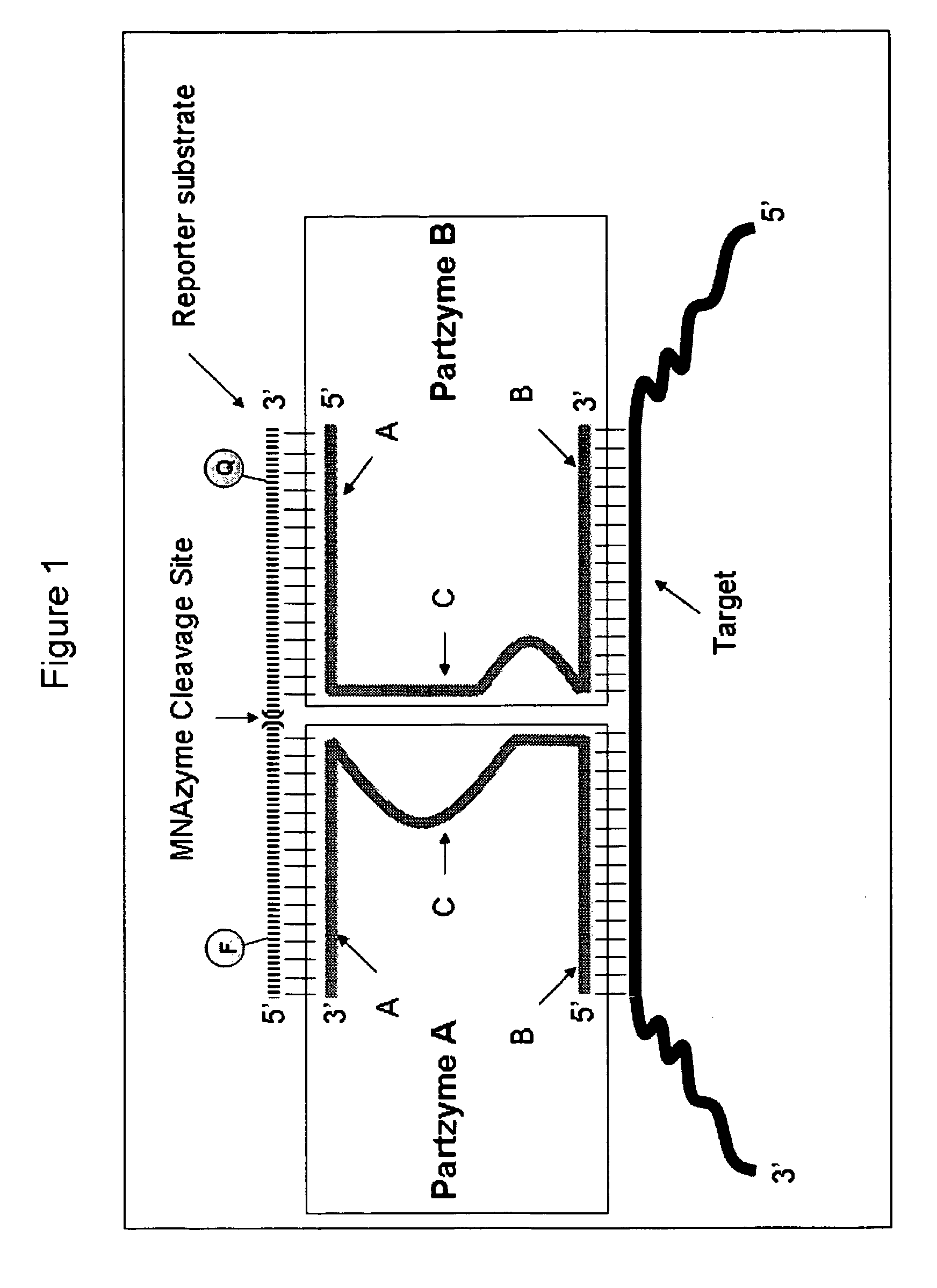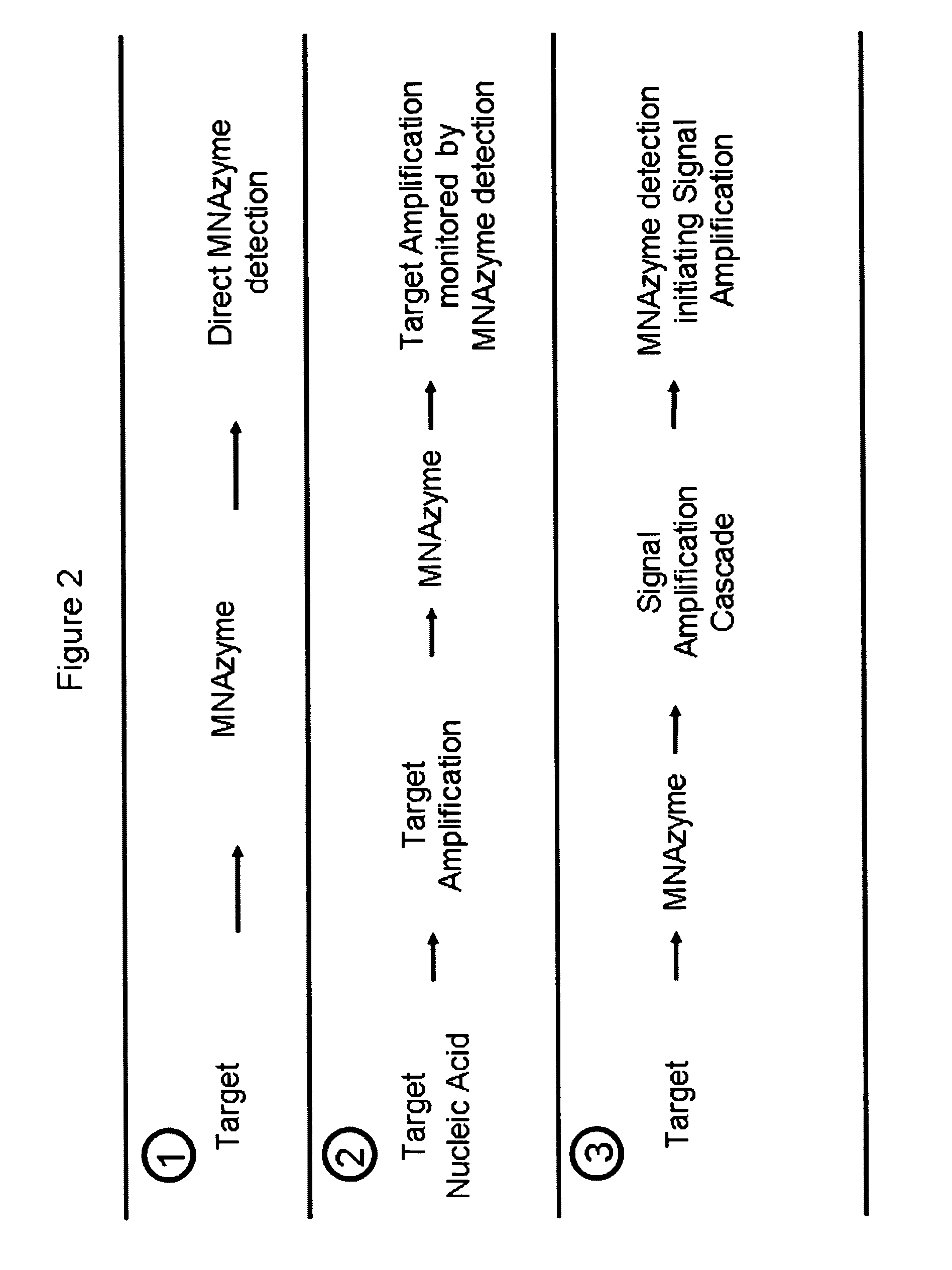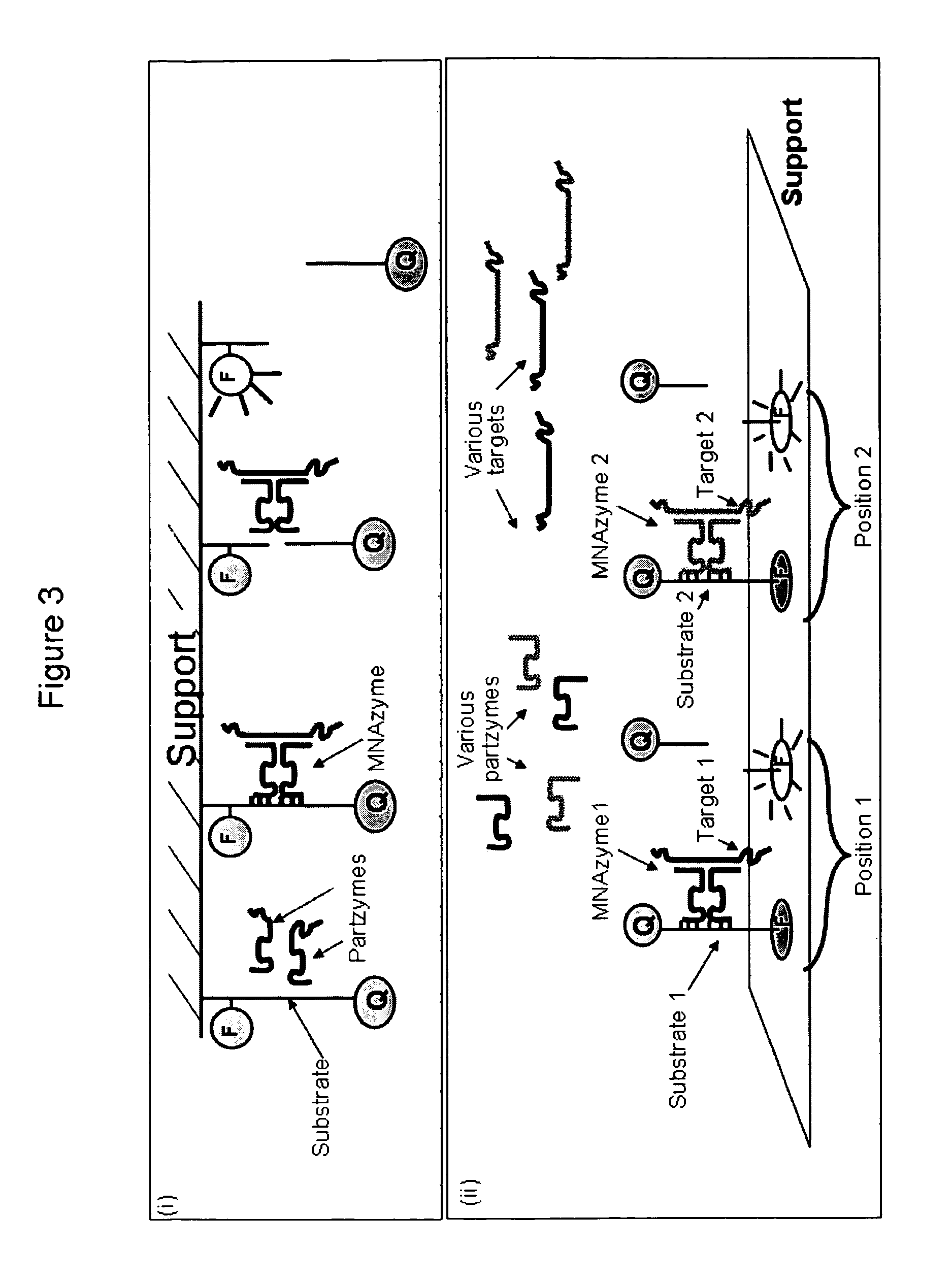Multicomponent nucleic acid enzymes and methods for their use
a multi-component, nucleic acid technology, applied in the field of multi-component catalytic nucleic acids, can solve the problems of inability of dnazyme to function in dimeric or multi-meric formats, potential noise due to amplification of primer sequences, etc., and achieve the effect of increasing or decreasing the detection effect of said detectable portion
- Summary
- Abstract
- Description
- Claims
- Application Information
AI Technical Summary
Benefits of technology
Problems solved by technology
Method used
Image
Examples
example 1
Application of MNAzymes to the Direct Detection of a Target Nucleic Acid (Human RPLPO Sequence)
1.1. Partzyme Oligonucleotides
[0423]Four designs for MNAzymes (FIGS. 8-10) based on the 8:17 DNAzyme were tested. Those skilled in the art will appreciate that the sensor arm (target binding) sequences designated by “N” may be replaced by target-specific sequences for any known nucleic acid target (FIGS. 8-10). The substrate arm sequences, which bind the reporter substrate, can be generic and used for many targets. Those skilled in the art will appreciate that the substrate sequences designated by “N′” in FIGS. 8-10 may be replaced by DNA, RNA or DNA / RNA chimeric sequences and those designated by “r” may be replaced by other and / or a different number of ribonucleotide sequences.
[0424]In the experiments conducted to measure the catalytic activity of the RPLPO MNAzymes described in FIGS. 8-10, the A and B oligonucleotide partzymes were designed to target exon 4 of the RPLPO gene. The sequenc...
example 2
MNAzymes for Detection of miR-20 or Short DNA Sequences Homologous to miR-20
2.1. Partzyme Oligonucleotides
[0439]Detection using MNAzymes can also be used for the analysis of miRs. In this example, the MNAzyme only forms when the correct miR sequence is present. This MNAzyme can distinguish between related miR sequences e.g. hsa-miR-20 and hsa-miR-93.
[0440]In the experiments conducted to measure the catalytic activity of the MNAzyme described in FIG. 11, the A and B partzyme oligonucleotides were designed to target hsa-miR-20. The sequences of the partzymes A and B oligonucleotides are listed below from 5′ to 3′. In the following sequences, the bases underlined form part of the catalytic core of the assembled MNAzyme, bases in bold hybridize with the target, and bases in italics hybridize to the substrate.
[0441]
SEQ ID NO: 10: Partzyme A2:miR20A2 / 1: TACCTGCACTACGGTCGAAATAGTGAGTSEQ ID NO: 11: Partzyme B3:miR20B3 / 1: CATCTCTTCTCCGAGCTAAGCACTTTA
2.2. Reporter Substrate
[0442]MNAzyme activit...
example 3
MNAzymes (Designs 5 and 6) for Direct Detection of a Nucleic Acid Target
3.1. Partzyme Oligonucleotides
[0455]The designs 5 and 6 for MNAzymes, based on the 10:23 DNAzyme, were tested for catalytic activity (FIG. 13). Those skilled in the art will appreciate that the sensor arm (target binding) sequences designated by “N” may be replaced by target-specific sequences for any known nucleic acid target. The substrate arm sequences, which bind the reporter substrate, can be generic and used for many targets. Those skilled in the art will appreciate that the substrate sequences designated by “N” in FIG. 13 may be replaced by DNA, RNA or DNA / RNA chimeric sequences.
[0456]In the experiments conducted to measure the catalytic activity of the RPLPO MNAzymes described in FIG. 13, the A and B oligonucleotide partzymes were designed to target exon 5 of the RPLPO gene. The sequences of the A and B partzymes are listed below from 5′ to 3′ where the bases underlined form part of the catalytic core of...
PUM
| Property | Measurement | Unit |
|---|---|---|
| temperature | aaaaa | aaaaa |
| temperature | aaaaa | aaaaa |
| temperature | aaaaa | aaaaa |
Abstract
Description
Claims
Application Information
 Login to View More
Login to View More - R&D
- Intellectual Property
- Life Sciences
- Materials
- Tech Scout
- Unparalleled Data Quality
- Higher Quality Content
- 60% Fewer Hallucinations
Browse by: Latest US Patents, China's latest patents, Technical Efficacy Thesaurus, Application Domain, Technology Topic, Popular Technical Reports.
© 2025 PatSnap. All rights reserved.Legal|Privacy policy|Modern Slavery Act Transparency Statement|Sitemap|About US| Contact US: help@patsnap.com



